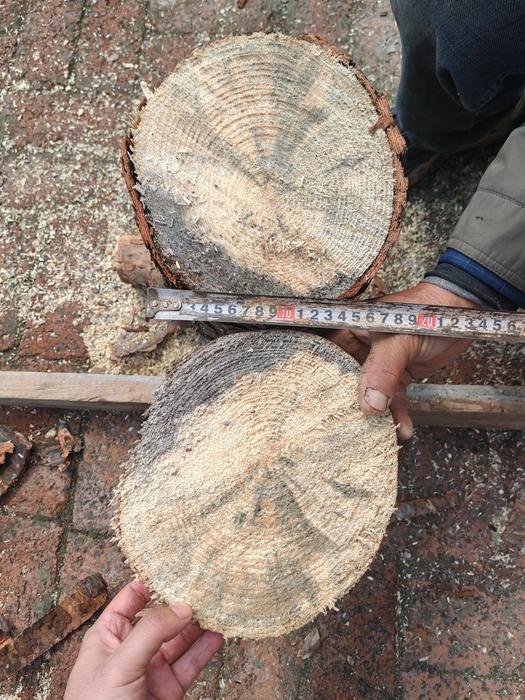A remarkable paleontological discovery from northeastern China has unearthed fossil evidence of blue-stain fungi dating back to the Jurassic period. This breakthrough research led by Dr. Ning Tian of Shenyang Normal University and Dr. Yongdong Wang at the Nanjing Institute of Geology and Palaeontology sheds unprecedented light on the evolutionary history and ecological dynamics of a unique group of wood-colonizing fungi. Prior to this finding, the oldest confirmed blue-stain fungal fossils hailed from the Late Cretaceous, approximately 80 million years ago. The new fossils, however, push this record back by nearly 80 million additional years, unveiling their presence approximately 160 million years ago.
Blue-stain fungi form a distinctive subset of fungi that inhabit wood, characterized by their remarkable inability to decompose the complex lignocellulosic structure of wood. Despite this limitation, they are notorious for causing significant discoloration in timber, a trait visibly apparent in extant examples today. This discoloration is attributed to the dark pigmentation incorporated within their hyphae, a feature observed in the newly discovered Jurassic fossils, providing robust morphological evidence linking these ancient fossils to their modern counterparts.
Detailed microscopic analysis of these Jurassic fossil hyphae revealed specialized morphological adaptations, specifically the formation of “penetration pegs.” These narrow, tapered structures enable the fungal hyphae to mechanically breach the robust cell walls of wood. Unlike wood-decay fungi, which secrete enzymes to chemically degrade cell walls, blue-stain fungi employ this mechanical strategy to infiltrate and colonize woody tissues. Identification of these penetration pegs in the fossils is a crucial diagnostic trait affirming their classification as blue-stain fungi, and it contributes to a deeper understanding of their functional ecology in ancient forests.
The implications of this discovery extend beyond merely redefining the age range of blue-stain fungi. It presents a tangible glimpse into the ecology of Jurassic forest ecosystems, evincing complex interactions among fungi, plants, and insects that shaped these ancient biomes. Contemporary blue-stain fungi often rely on bark beetles, particularly those from the subfamily Scolytinae, to disseminate their spores. However, these beetles are thought to have emerged no earlier than the Early Cretaceous period, creating a temporal discrepancy with the Jurassic age of the fungus. This discrepancy suggests the existence of alternative insect vectors responsible for spore dispersal during the Jurassic, a subject ripe for further exploration.
The fossil wood specimen, preserved with exceptional fidelity, originates from Jilin Province in Northeast China. This region’s Jurassic sediments have previously provided valuable paleobotanical insights, but this is the inaugural report revealing the intricate fungal associations within the wood. The dark pigmentation of the fossilized hyphae matches that seen in modern blue-stain fungi, a remarkable example of phenotypic continuity across millions of years. These findings not only underscore the longevity and resilience of these fungi but also invite reconsideration of fungal evolution timelines proposed by molecular studies.
Molecular phylogenetic analysis had previously placed the origin of blue-stain fungi broadly in the Late Paleozoic to Early Mesozoic eras, but empirical fossil evidence remained elusive. The current study bridges this gap by providing concrete paleontological data corroborating these molecular hypotheses. It thus contributes critical verification for evolutionary models predicated on molecular clocks, enhancing their accuracy and reliability.
The mode of wood colonization adopted by blue-stain fungi differentiates them fundamentally from other fungal wood decomposers. Their lack of enzymatic degradation capabilities restricts them to mechanical penetration, which may have influenced their ecological roles as opportunistic colonizers of stressed or insect-damaged trees. Their interactions with wood-boring insects likely amplify the decline of host trees, accelerating mortality even if the fungi themselves are non-lethal under isolated conditions. This synergistic relationship has significant implications for understanding ancient forest health and dynamics.
Furthermore, by unveiling fungal-insect-plant relationships dating back to the Jurassic, this study provides a novel framework for interpreting forest evolutionary ecology. The presence of blue-stain fungi during this era suggests that sophisticated mutualistic and antagonistic interdependencies had already been established within terrestrial ecosystems. It broadens the perspective on how fungal diversity and ecological strategies have become entrenched in forest biomes over geological timescales.
The research team’s meticulous examination utilized advanced imaging techniques to discern fine-scale fungal structures within the fossilized wood matrix. This approach affirms the growing importance of integrating paleomycological and paleobotanical methodologies to unravel ancient biodiversity patterns. Insights gained from such fossils enable scientists to reconstruct ancient ecological webs with enhanced precision, opening new avenues in evolutionary biology and forest ecology.
From a broader evolutionary standpoint, the discovery challenges previous assumptions concerning fungal diversification rates and ecological niche establishment. Blue-stain fungi evidently achieved specialized wood-colonizing strategies much earlier than formerly recognized, indicating a rapid evolutionary radiation during the Jurassic. This realization prompts a reevaluation of fungal phylogenies and calls for intensified fossil searches globally to further capture the early diversity of this fungal lineage.
In conclusion, the Jurassic blue-stain fungal fossils discovered in China signify a milestone in paleomycology, fossil ecology, and evolutionary biology. By revealing an 80-million-year extension of the known fossil record, demonstrating distinct hyphal adaptations, and proposing novel insect-fungal interactions, this finding fundamentally enriches the scientific community’s understanding of ancient fungal evolution and ecological complexity.
Subject of Research: Fossil blue-stain fungi from the Jurassic period and their early evolution and ecological interactions.
Article Title: Blue-stain fungus from the Jurassic provides new insights into early evolution and ecological interactions.
Web References: 10.1093/nsr/nwaf160.
Image Credits: Courtesy Dr. Fei Liang.
Keywords: Blue-stain fungi, Jurassic fossils, fungal evolution, wood-colonizing fungi, penetration peg, fungal-plant-insect interactions, paleomycology, fossil hyphae, wood discoloration, fungal ecology, molecular phylogenetics, Jurassic period.




